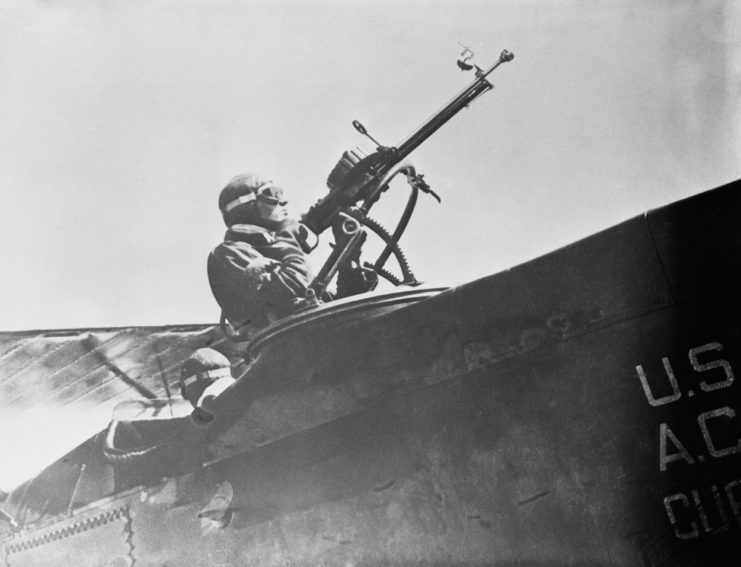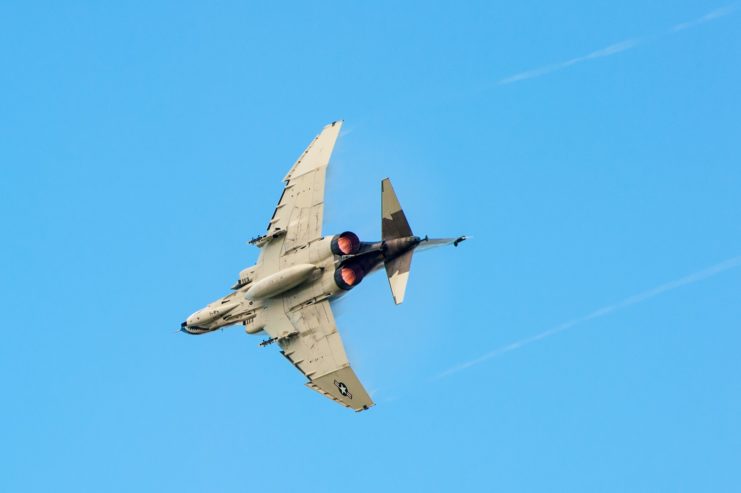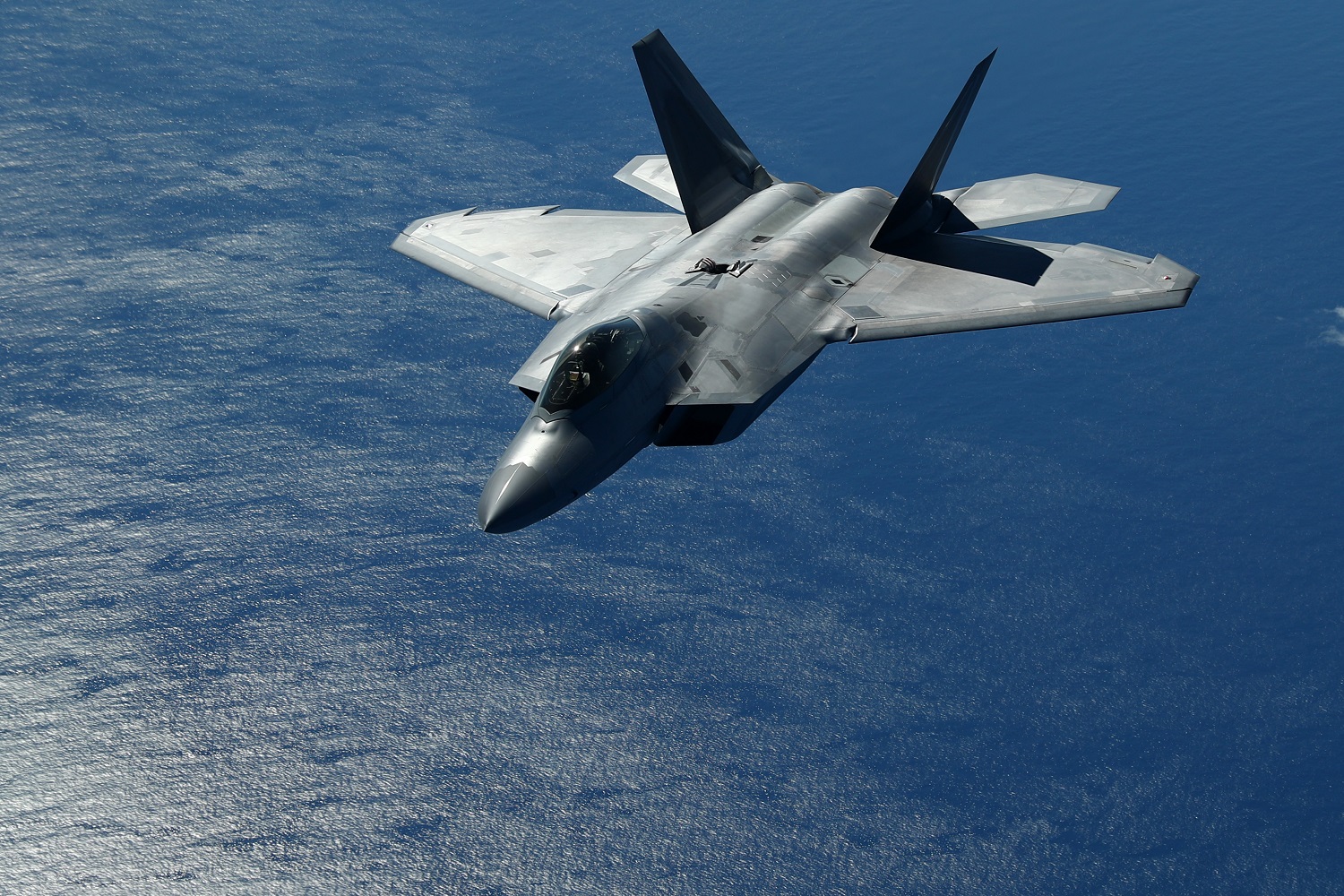Both the F-22 Raptor and F-35 Lightning II can carry missiles that are able to strike an enemy aircraft well over 30 miles away with lethal precision. In addition to this, pilots are equipped with some of the most advanced technology in the world to ensure they are able to deal with aircraft long before they are a threat. So why are they still armed with old-fashioned guns?
The F-22, F-35, and other similar US aircraft are armed with rotary cannons, accompanied with a few hundred rounds of ammunition. This tool has accompanied aircraft since the early 20th century.
Machine guns in aircraft

Automatic weapons have been a critical component of fighter aircraft since WWI. To begin with, militaries mostly used aircraft for reconnaissance, so there was little need for them to carry weapons. Despite this, it didn’t take long for WWI pilots to find ways of killing each other in the air.
At first, they would quite literally throw objects at each other, but then once handguns and other firearms were brought with them, an arms race began. Machine guns were eventually installed onto aircraft that were built with the purpose of destroying other aircraft.
As this was still the early days of aviation, aircraft barely had enough power to carry the pilot and a gun, let alone armor plating.
But by WWII, aircraft engines had developed massively and armor plating was not uncommon. Other additions like self-sealing fuel tanks had also improved aircraft durability. Improvements in offensive weapons were made to overcome these changes.
Cannon rounds were much more effective at inflicting large amounts of damage when they hit as they could carry a small number of explosives. However as they had a slower rate of fire, actually hitting the target was more challenging.
By the end of the war, many aircraft compromised and used a combination of both cannons and faster firing machine guns.
Into the jet age

One of the many changes that arrived in the jet age was air-to-air missiles, which, when they worked, were a revolutionary new weapon of war. Aircraft could now destroy an enemy from much further away without engaging in a risky dogfight.
While early missiles like the Sidewinder were certainly useful and had excellent potential, they were still a new technology, so their reliability was questionable.
However, military officials were overzealous about the capabilities and reliability of missiles and believed that guns had no place in the supersonic aerial combat of the future. As a result, the extremely powerful F-4 Phantom was designed without an internal gun.
This decision was infamously proven to be a bad one during the Vietnam War when F-4s clashed against enemy MiGs. Engagements between these aircraft would often turn into close-range subsonic knife fights, which rendered their missiles useless. F-4s that were able to get behind an enemy MiG were unable to shoot them down.
After this, modifications were made to the F-4 so it could carry a gun for close-range combat, and almost every US fighter since then has incorporated this necessary tool.
Today, missile technology and reliability have improved significantly, meaning almost all kills are achieved with missiles.
So, why still carry guns?
Guns are rarely used in modern combat, but they remain a staple in aircraft design because missiles are still not foolproof. A gun can make up the difference when missiles fail, even if it is an extremely unlikely situation today.
As mentioned, missiles were mostly ineffective at close ranges in Vietnam, and this is still the case today, albeit to a lesser degree. Some modern missiles can be useless at ranges less than a few miles.
Missiles are vulnerable to countermeasures, too. Flares, chaff, and electronic countermeasures are all effective ways of hampering a missile’s chance of striking its target. When all other options have been expended, a burst of machine-gun or cannon fire can be what wins the fight.
Without them, aircraft would have to try and keep a specific distance that suits the missiles, or enter a dogfight with no means of dispatching the enemy. For these reasons, guns are still fitted to even the most advanced fighters, and likely will be for the foreseeable future.
